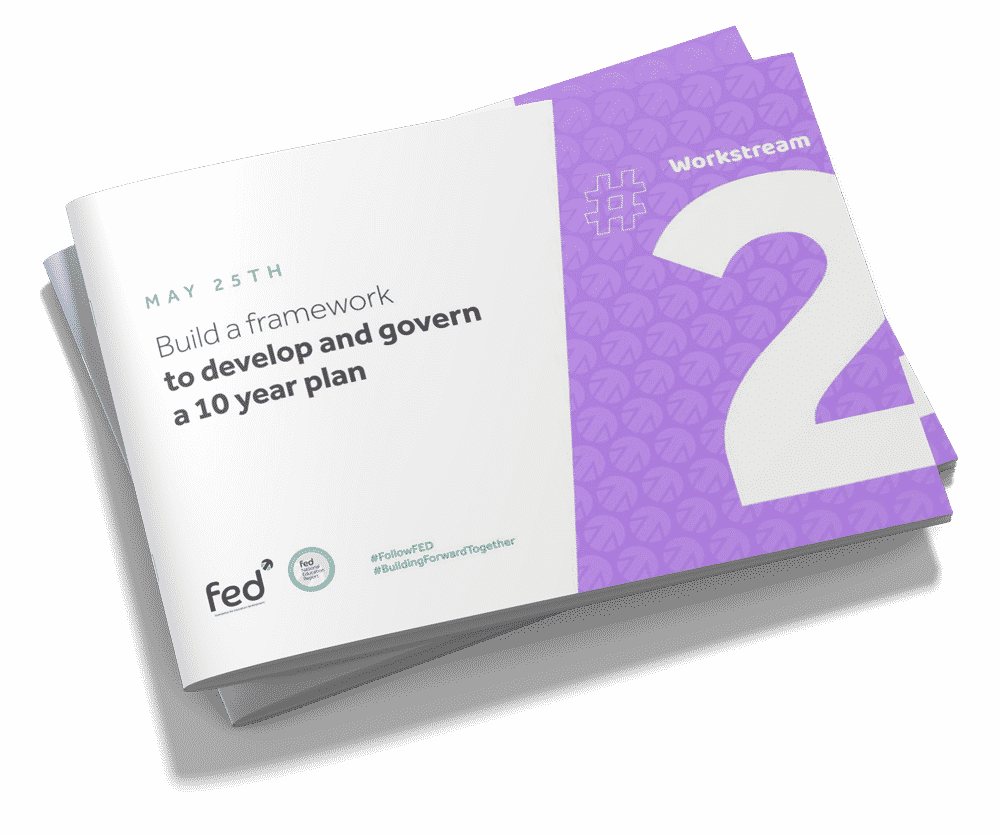Following the launch of the FED National Education Consultation Report, we are hosting a series of 4 roundtable discussions seeking the views of all stakeholders to focus on what is needed to deliver a long-term vision and plan for education on our 4 workstreams.
In our second roundtable we are discussing Workstream 2 – Develop a framework to develop and govern a 10-year plan. For this important discussion, we asked Patrick Wall to provide a think piece during the roundtable to help stimulate our thinking.
In this blog, Patrick Wall, a FED Trustee and the founder of edpol.net, a research project to support better and more enduring policy change, argues that interdependency with the system adds to the complexity and asks us to consider who’s evidence and input the systems needs to use to shape a long-term vision and plan for education. This blog can be read alongside the accompanying slides to the think piece.
Patricks blog:
On the 25th May, FED’s workstream 2 explored the structure and governance of a long-term plan in education, which together can be called the system architecture.
Vision and Purpose provides us with a guiding light: it tells us where we want to get to (see the previous Fedspace here). The long-term plan maps out the pathway to achieve the Vision and Purpose.
The structure defines the elements of the plan. That starts with our goals and desired outcomes, then perhaps a gap analysis – how far are we from achieving our goals? Next, generating corrective plans, setting priorities and considering implementation, including deciding whether to pilot and evaluate, or roll out nationally.
We discussed the complexity of the education eco-system: twenty-four thousand schools, over half a million teachers and lecturers and over nine-million students. Many of the levers of change are interdependent, so new policy must be introduced with great preparation and care.
To build a long-term plan, we also need to agree who to involve and what knowledge to draw upon – how far is a plan influenced by ideology, research evidence, experts, practitioners and stakeholders? More on this can be found in the thought piece here.
The governance of a plan defines who is responsible for agreeing the structure and then who manages the plan’s development, quality and output. Looking at home nations and overseas jurisdictions, governance can be top down, participatory or delegated. It’s fair to say that England has something of an ad-hoc approach to policy making, so this provides an opportunity… if we can take it!
Many of the breakout groups came to similar conclusions. We need strong collaboration and many voices should be heard, but we also acknowledge that this is a complex area. We need to find a planning and governance structure that protects the democratic authority of government, spans multiple electoral cycles and includes the views of stakeholders, experts and place-based representatives.
Currently there are many organisations trying to influence policy. This can increase the noise and highlight differences. To be effective, these voices need to be collected in one place. In this manner, could the non-governmental sector build its own long-term plan, one that earns the respect and legitimacy necessary for cross-party support? Or should we support an influential representative body that is independent of government, that can work with the DfE to build a long-term plan?



